Media | Articles
The Patriot Was a High-Tech Chrysler Ahead of Its Time
In the realm of lesser known but wildly curious “what might have been” moments from Chrysler’s history, this turbine-electric hybrid sports racer surely deserves a nod. And given its name, the Patriot, today of all days seems a fine time to give it some ink.
For about a minute, some 30 years ago, Chrysler had a hankering to go endurance racing at Daytona, Sebring, and Le Mans. And given the carmaker’s history with experimental turbine technology, that’s exactly the direction it looked.
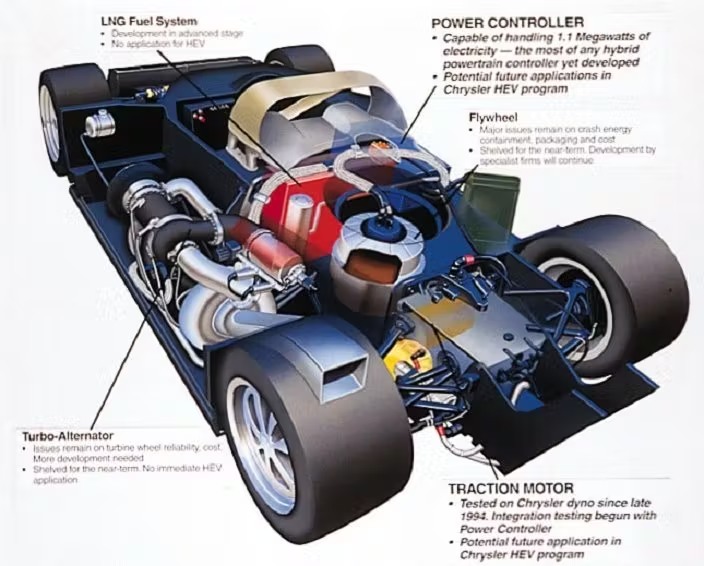
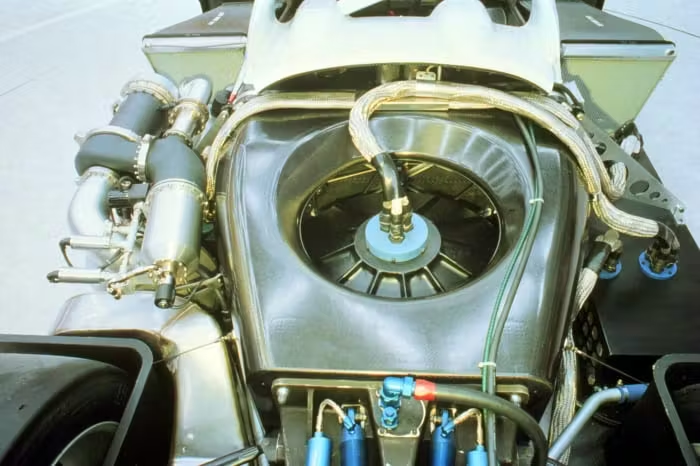

The car was the brainchild of engineer Ian Sharp in 1993, though it spiraled out of his control before it ever got off the ground. Or out of the pits, anyway. The plan was to use liquid natural gas (LNG) to power a two-stage turbine alternator spinning at 50,000 rpm at low speed, and 100,000 rpm at high speed. That powered a four-pole, three-phase, 525-volt AC traction motor spinning at 24,000 rpm. A vacuum-housed flywheel mounted on a gimbal captured and stored the energy, a precursor to the kinetic energy recovery systems (KERS) developed for Formula 1. It could spin at up to 58,000 rpm.
Contractors involved in the project read like a who’s who of aerospace and defense giants. Northern Research and Engineering Corp. was to supply the turbines, derived from plans found in nuclear submarines and on military helicopters (Sharp’s plan had been to use AlliedSignal, though SatCon Technology Corp. was also introduced into the mix). Cryogenic Experts Inc. was tasked with developing a storage solution for the LNG. Westinghouse was to provide the traction motors. And now-defunct race car manufacturer Reynard would put it all together into a world-class race machine.

Chrysler unveiled the lithe bullet, appropriately liveried in red, white, and blue, at the 1994 Detroit auto show, with plans to have it ready for racing the following year. The company claims it tested at Donington Park in England, although reports suggest it never actually ran under its own power. The January 31, 1994, edition of AutoWeek magazine had a cover story on the Patriot: It was a year later that the author of the story learned that video he had been shown of the Patriot driving around Donington featured Le Mans, Daytona, and Sebring-winning racer Andy Wallace holding a tow rope, being pulled by a truck. On downhill sections of the track, Wallace was told to let go of the rope, and pretend to steer the car at speed, which is when video and photos were taken.
Marketplace
Buy and sell classics with confidence
The Patriot looked good on the show stand and utterly fantastical on paper, but in practice it simply didn’t work. The energy-capturing flywheel was the root cause of the issue. At nearly 1150 pounds, it was massive. It was also prone to shattering at high speeds, which were the only speeds at which it was meant to spin. And though with time and investment its problems might have been overcome, during testing it proved highly volatile, and engineers had genuine concerns that a failure would kill drivers, spectators, or both.
In period, Chrysler vice president of vehicle engineering Francois Castaing said that Chrysler had been “anxious to go back to top-level racing for some time. But we wanted to send two specific messages when we did. We wanted to be able to reconcile our research on environmental issues with racing—a subject many people have talked about. And we wanted to use racing once again for the purpose of developing all-new technology that will test the creativity and ingenuity of our people. The Patriot lets us do both.”
In the end, however, the Patriot allowed Chrysler to do neither. The project died and the name was given to an entry-level Jeep. The mighty McLaren F1 went on to win Le Mans in 1995, and the only Chryslers that competed in endurance racing in the ensuing years were Vipers. Good old fashioned, V-10–thumping Dodge Vipers.

***
Check out the Hagerty Media homepage so you don’t miss a single story, or better yet, bookmark it. To get our best stories delivered right to your inbox, subscribe to our newsletters.

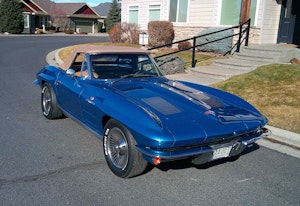
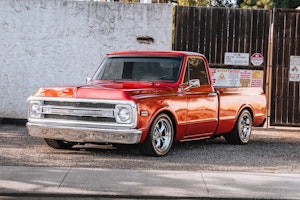
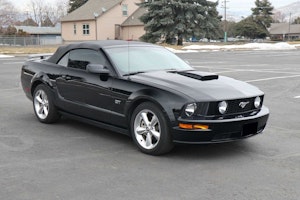

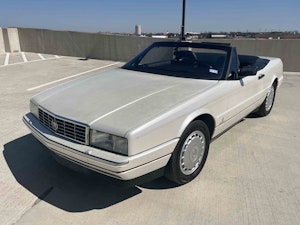











It’s the bomb. Literally! Loved the Chrysler turbine era, too bad this was a bit too much.
I wonder how loud that thing was. It looks good, would be fun to see it on a track.
One of my driver customers, Rand Watkins, bought all of the parts and pieces from Chrysler for this project. All of the chassis and body parts were brought to Motorsport Ranch Cresson (Texas) and stored in his 4-bay trackside garage. He tasked me to develop a plan to fully assemble the parts for two cars and make them rollers. Research was done for a plan to power them with Mopar sprint car style engines. Rand decided to retire from racing so I sold his Viper LeMans car and the two prototype chassis to a racer from Canada. He and I invested a week sorting, inventory and packing all the cars and spares and loading everything into an 18 wheeler trailer for transport back to Montreal for the new owner. I have never heard or seen the Viper or the two prototypes since. I have always been curious. Denver Ray Mut DRM Racing
I actually worked on the drive train of this car at SATCON in Cambridge MA. They were trying to create perpetual motion. Well we all know about that. Fixed magnet motor on each wheel I think about 40hp. each and the main motor a solid steel armature with ribs of copper running threw. Chrysler bitch slapped after failing in a Trade Rag. It seemed like a good idea at the time but doomed to failure.
As the originator of this program [Ian Sharp] this is not factual as there is a lot, lot, lot more to the project than this. Francoise Castaing moved me off the project after I had laid everything out. Castaing used a completely new raft of suppliers. I had worked with for 6 months to develop the proposal with a great group of companies who had the technology. The Chrysler Corporate guys were handed the project, and none of them had any high-level motorsports experience and therefore didn’t have a clue how to do it. For example, the Flywheel energy storage system was never meant to replace the battery (there is a funny story around this) as it was meant to be an electrical “Load Levelling) system. Remember when this was proposed we only had NiCad batteries, Lithium Ion had not arrived yet. Also, there is the small question of the missing $82M in Gov money which went to the new crew of companies, that I did not spec or who had the correct technology, which the Chrysler people brought in. . . .wonder where all that money went to ? If you want to know the true story email me at . . .ian@hybine.com. . . .